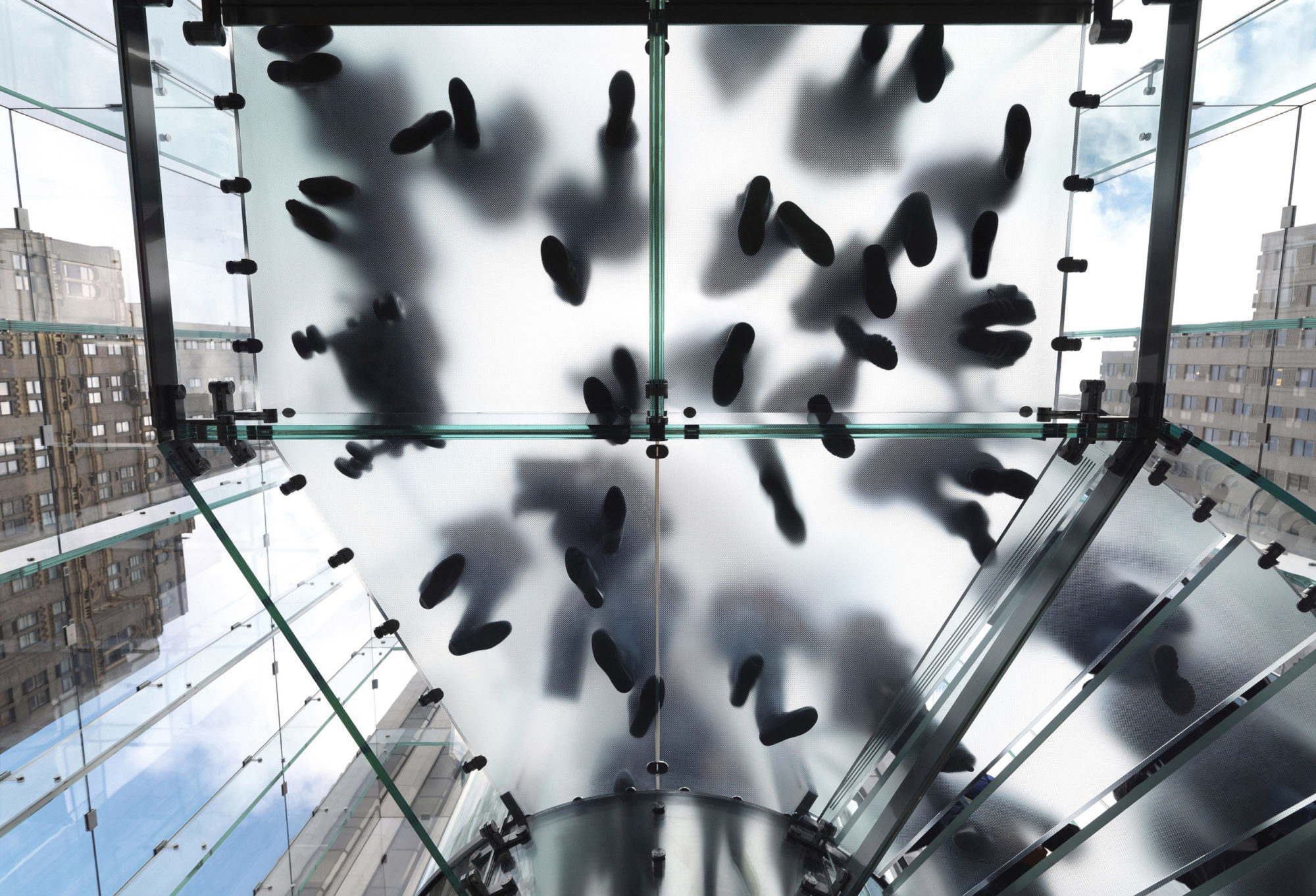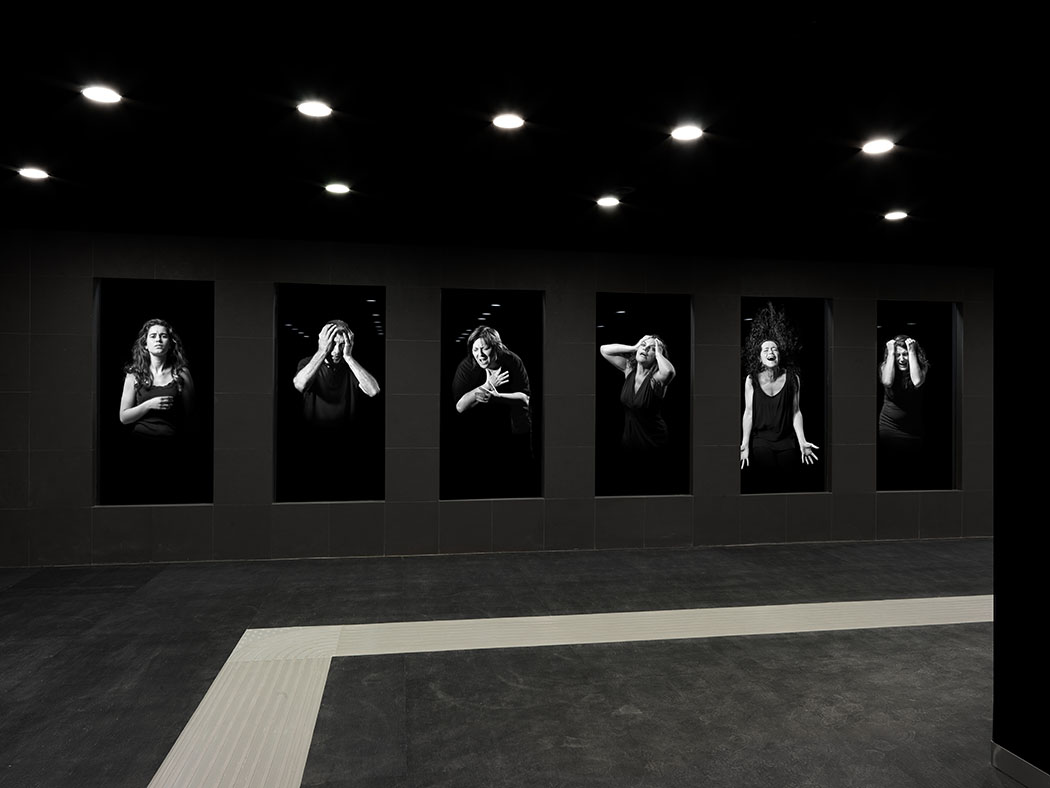
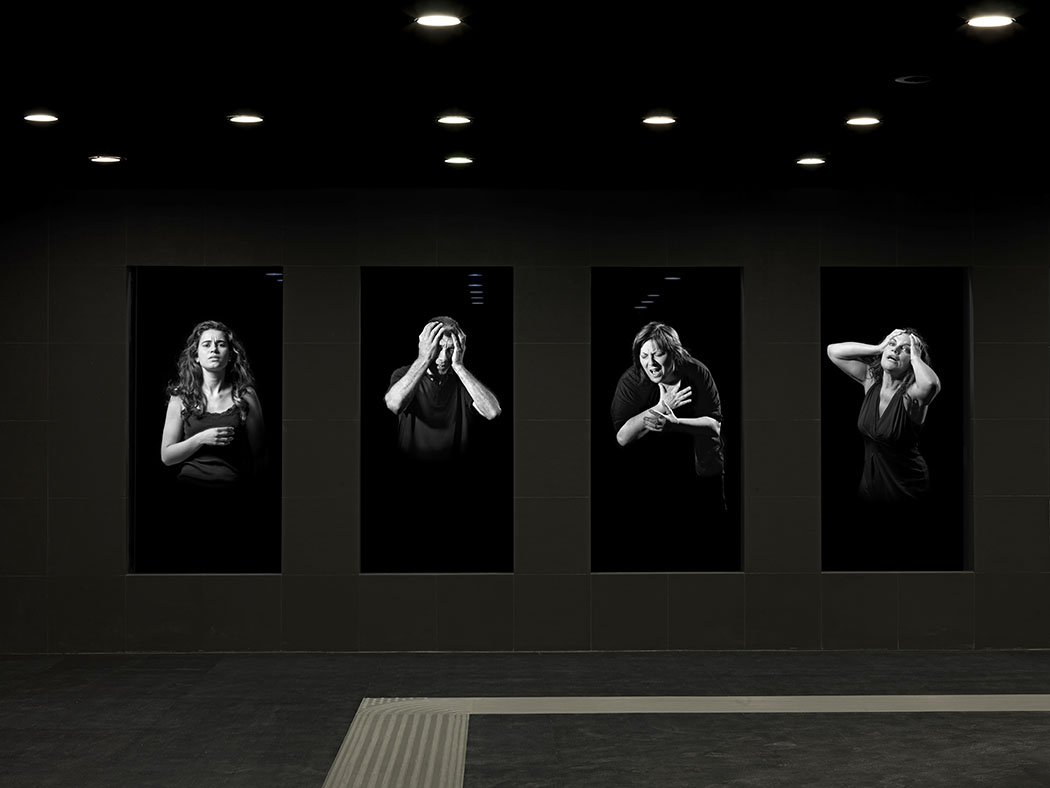
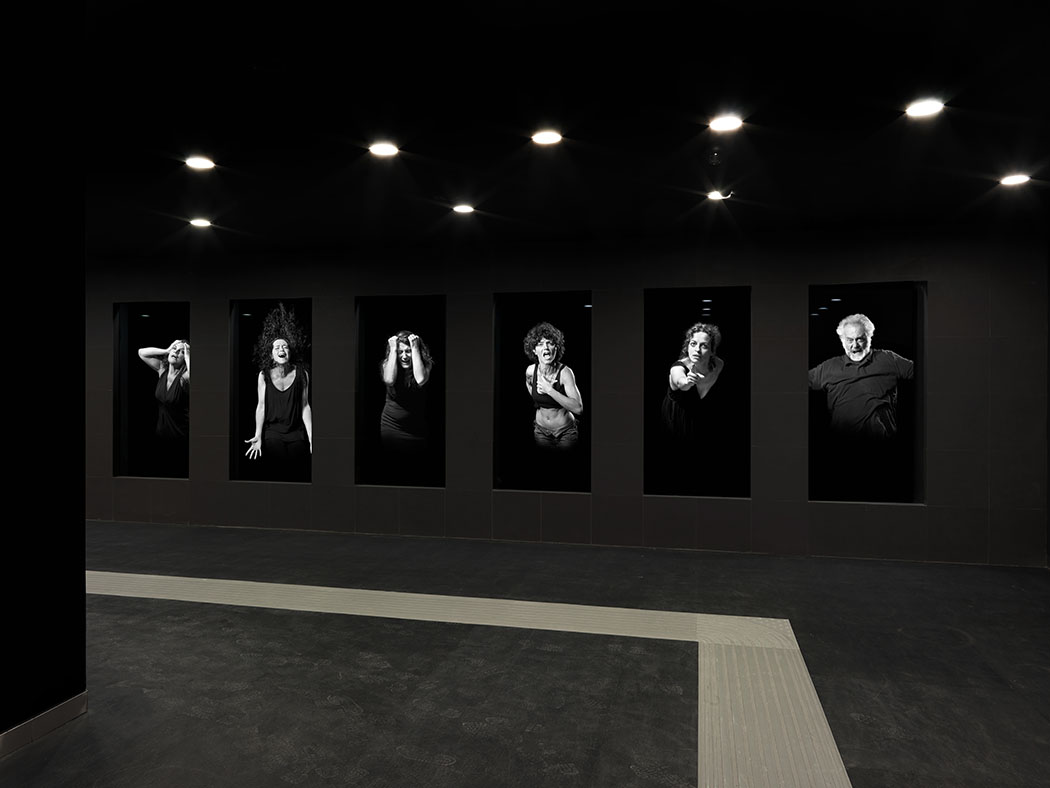
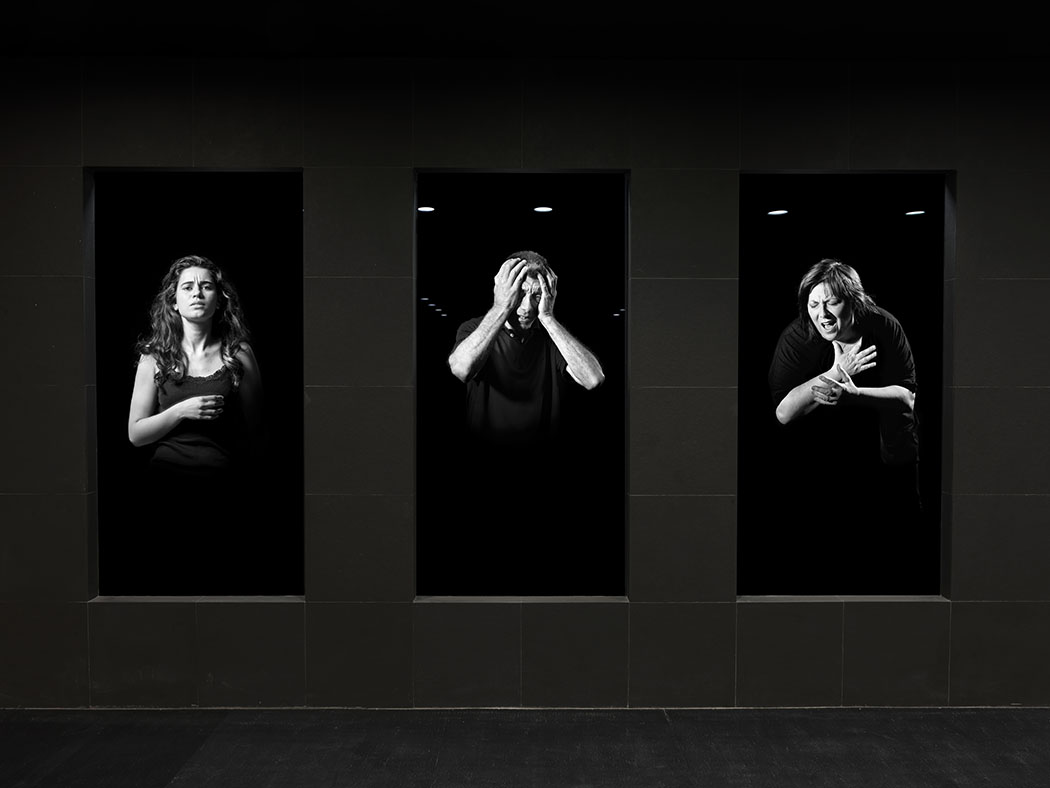
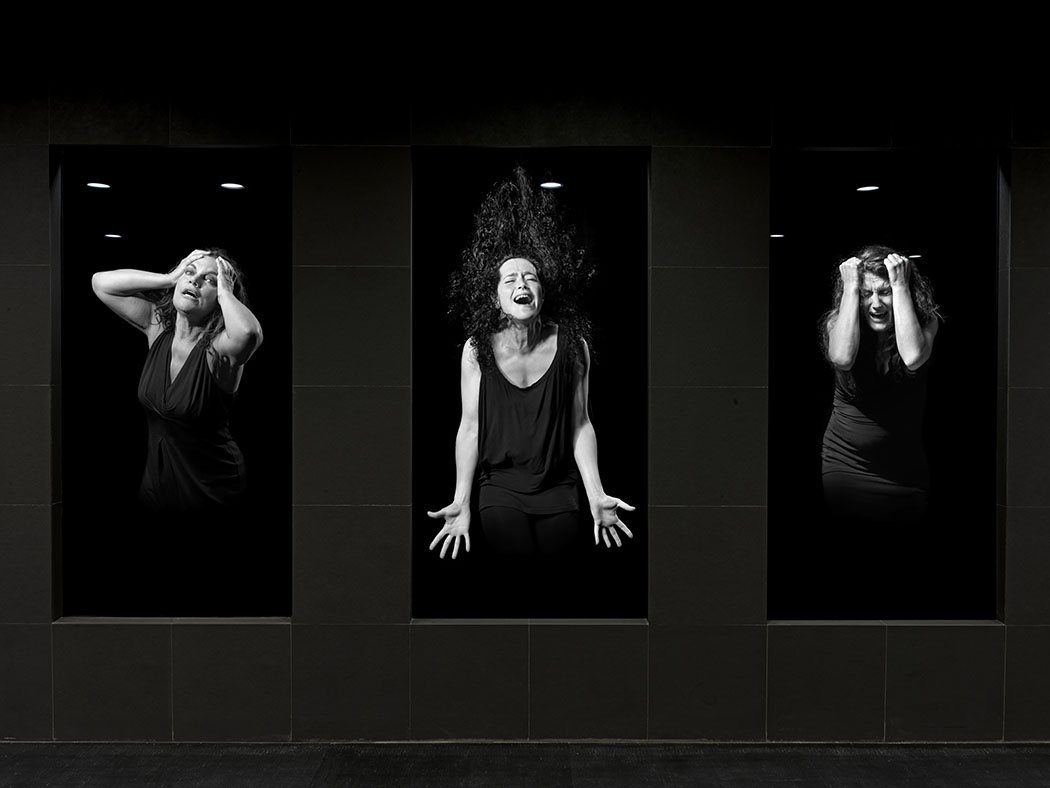
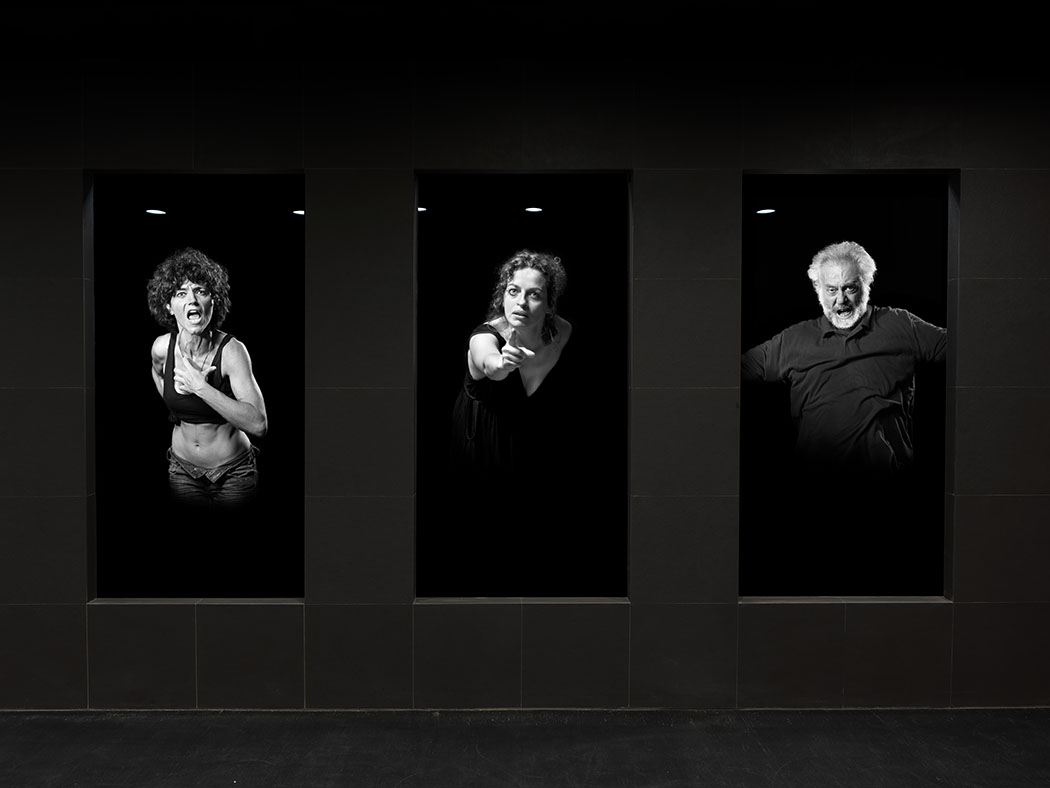
Don’t ask where the love is gone permanent installation conceived for the Toledo Station in the Naples Underground by Shirin Neshat, photography by Luciano Romano. Curated by Achille Bonito Oliva, project and production: Change Performing Arts.
Nine actors describe a passage of emotions, from the bewilderment of the young girl who opens the series, to the angry fury of the older man who closes the sequence, through nine emotional states where dismay gives way to awareness and anger. The concept of the work was born in 2011 on the emotional push of the events of the Arab Spring, when the individual drama of the individual managed to find a dimension of collective protest. Shirin Neshat realized, however, that she could not simply transfer her idea of herself to the contradictory reality of Naples, and at this point she changed the political value of her project to focus on the more markedly individual and human aspect. The choice of light refers to those paintings of the seventeenth century where artists such as Caravaggio, Ribera or Artemisia Gentileschi, coming from other cultural contexts, arrived in Naples, not by chance, pushing the highly theatrical dimension of their works. Those who witnessed the shooting will be able to say that no one was ever posed (hence the choice to use Luciano Romano, a photographer known for his mastery of language, light and theatrical time), that thousands of shots were were produced and dozens of actors and theater-related characters took turns in front of the lens. Shirin Neshat, director of the film “Women Without Men” which won the Silver Lion at the Venice Film Festival, is a visual artist deeply linked to the human dimension and was very skilled in suggesting to the actors not to act in a play, but to tell the stories own personal dramas, whether large or small, succeeding fully. Nine episodes, to be watched through nine windows, a metaphor for the half-doors of the adjacent “bassi”, where individual stories are transformed in spite of themselves into a choral dimension.
Don’t ask where the love is gone installazione permanente creata per la Stazione Toledo della Metropolitana di Napoli da Shirin Neshat, con fotografie di Luciano Romano. A cura di Achille Bonito Oliva, progetto e produzione: Change Performing Arts. 18/09/2013
Nove attori più o meno noti descrivono un passaggio di emozioni, dallo smarrimento della giovane ragazza che apre la serie alla furia rabbiosa dell’uomo più anziano che chiude la sequenza, attraverso nove stati emotivi dove lo sgomento lascia il passo alla consapevolezza e alla rabbia. Il concept del lavoro nasce nel 2011 sulla spinta emotiva degli eventi della Primavera Araba, quando il dramma individuale del singolo riesce a trovare una dimensione di protesta collettiva. Shirin Neshat si è resa conto tuttavia che non poteva trasferire semplicemente la sua idea alla contraddittoria realtà di Napoli, e a questo punto ha ridimensionato la valenza politica del suo progetto per concentrarsi sull’aspetto più marcatamente individuale e umano. La scelta della luce rimanda a quei quadri del seicento dove artisti quali Caravaggio, Ribera o Artemisia Gentileschi, venendo da altri contesti culturali, arrivati a Napoli spingono non a caso sulla dimensione fortemente teatrale delle loro opere. Chi è stato testimone delle riprese potrà raccontare che mai nessuno è stato messo in posa (e da qui la scelta di servirsi di Luciano Romano, un fotografo conosciuto per la padronanza del linguaggio, della luce e del tempo teatrale), che migliaia di scatti sono stati prodotti e decine di attori e personaggi legati al teatro si sono avvicendati davanti all’obiettivo. Shirin Neshat regista del film “Donne senza uomini” Leone d’Argento al Festival del Cinema di Venezia, è un’artista visiva profondamente legata alla dimensione umana, ed è stata abilissima nel suggerire agli attori di non recitare una pièce, ma di raccontare i propri drammi personali, grandi o piccoli che fossero, riuscendoci in pieno. Nove episodi, da scrutare attraverso nove finestre, metafora delle mezze porte dei bassi contigui, dove le storie individuali si trasformano loro malgrado in una dimensione corale.
